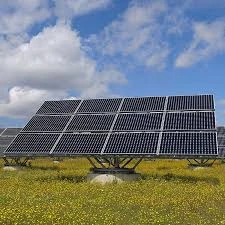Comparing Different Sizes of Solar Panels for Optimal Performance and Efficiency
Solar Panel Size Comparison Finding the Right Fit for Your Needs
In recent years, the shift towards renewable energy has gained significant momentum, with solar power leading the charge. As more homeowners and businesses seek to harness the sun's energy, understanding the variety of solar panel sizes available becomes crucial. This article will provide a comprehensive comparison of solar panel sizes, highlighting their characteristics, advantages, and considerations for choosing the right one for your specific needs.
Understanding Solar Panel Sizes
Solar panels vary in size, efficiency, and power output, and they can influence the installation process and the overall energy production of a solar power system. Typically, residential solar panels come in standard sizes, including 60-cell and 72-cell configurations.
1. 60-Cell Panels These are commonly used in residential installations. Measuring about 65 inches by 39 inches, they typically produce between 250 and 350 watts of power. Their smaller size makes them easier to mount on rooftops with limited space. They are also a suitable option for smaller homes or those looking to get their feet wet with solar energy without overwhelming their roof space.
2. 72-Cell Panels These larger panels measure approximately 77 inches by 39 inches and generally produce between 350 and 450 watts of power. Ideal for larger roofs or commercial installations, they provide higher energy output, which can lead to significant savings on electricity bills over time. However, their size and weight may require stronger mounting structures.
3. Compact Panels Aside from the standard 60-cell and 72-cell options, there are also compact solar panels designed for unique installations, such as RVs or tiny homes. These panels often feature fewer cells and smaller dimensions but can still provide a respectable amount of power.
Efficiency and Power Output
Solar panel efficiency refers to the percentage of sunlight that a panel can convert into usable electricity. Higher efficiency panels produce more power from the same amount of sunlight, which is especially advantageous in limited space situations. Generally, monocrystalline panels tend to have higher efficiency ratings than polycrystalline panels.
When comparing solar panels of different sizes, it’s essential to consider the power output in relation to the physical size of the panel. For instance, a smaller 60-cell panel may have a lower output than a 72-cell panel, but it can be more suitable for a smaller roof area where maximizing space is critical.
solar panel size comparison

Factors to Consider When Choosing Solar Panel Size
When deciding on the appropriate size of solar panels for your installation, several factors come into play
1. Roof Size and Orientation The available space on your roof significantly influences which panel size you can use. If you have a small or shaded roof, smaller panels may be more advantageous. Meanwhile, a large, unobstructed roof can accommodate larger panels for higher energy production.
2. Energy Needs Assess your energy consumption to determine how much power you need your solar panels to produce. A larger home with high energy requirements may benefit from larger 72-cell panels, whereas a smaller household could meet its needs with 60-cell panels.
3. Budget Solar panel prices vary based on size, brand, and efficiency. Generally, larger and more efficient panels are more expensive. It's important to strike a balance between your budget and the energy output you require.
4. Local Regulations and Incentives Some areas have restrictions on the size and type of solar installations. Additionally, local incentives may influence the overall cost-effectiveness of choosing larger panels versus smaller ones.
Conclusion
Selecting the right size of solar panels is a crucial step in transitioning to solar energy. By comparing the characteristics of 60-cell and 72-cell panels, as well as understanding your unique requirements and constraints, you can make a well-informed decision that maximizes energy production while fitting your available space and budget.
As technology advances, the solar energy market continues to evolve, offering even more options regarding panel size, efficiency, and design. Whether you opt for compact panels for an RV or large, high-output panels for a commercial building, the key is to align your choice with your energy goals and environmental aspirations.
-
Unlocking Energy Freedom with the Off Grid Solar InverterNewsJun.06,2025
-
Unlock More Solar Power with a High-Efficiency Bifacial Solar PanelNewsJun.06,2025
-
Power Your Future with High-Efficiency Monocrystalline Solar PanelsNewsJun.06,2025
-
Next-Gen Solar Power Starts with Micro Solar InvertersNewsJun.06,2025
-
Harnessing Peak Efficiency with the On Grid Solar InverterNewsJun.06,2025
-
Discover Unmatched Efficiency with the Latest String Solar InverterNewsJun.06,2025







